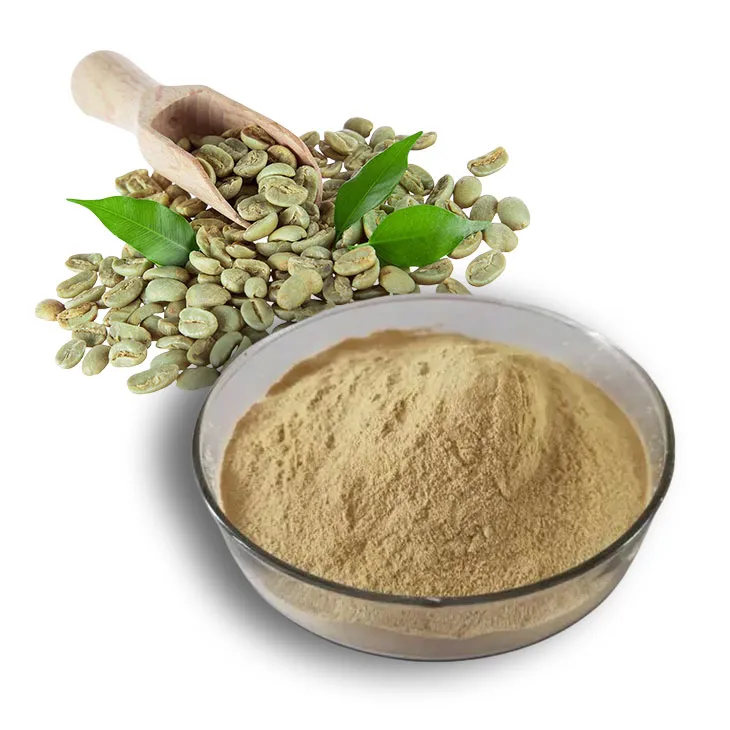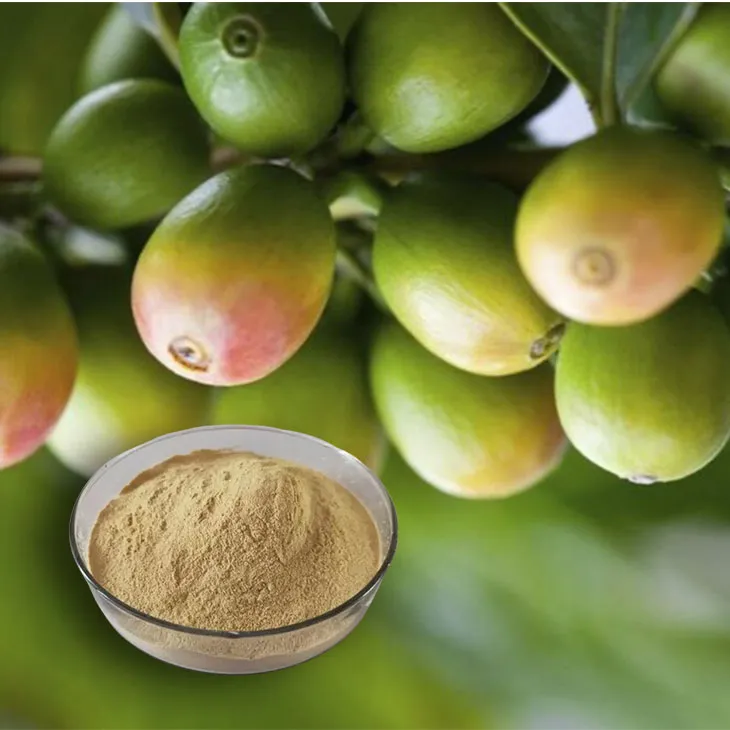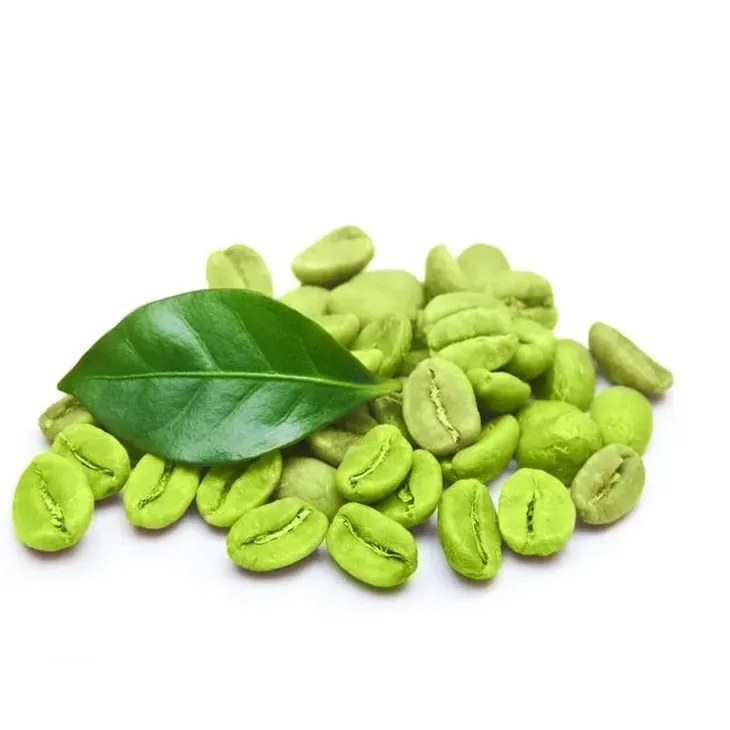- 0086-571-85302990
- sales@greenskybio.com
The Best Method for Extracting Green Coffee Bean Extract.
2024-11-28

1. Introduction
Green coffee beans have gained significant popularity in recent years, especially in the health and wellness industry. The extract from green coffee beans contains various bioactive compounds, such as chlorogenic acids, which are believed to have antioxidant, anti - inflammatory, and weight - loss properties. However, the extraction process plays a crucial role in obtaining a high - quality Green coffee bean Extract. This article will explore the different techniques, factors influencing extraction, and the importance of finding the optimal extraction method.

2. Extraction Techniques
2.1 Solvent Extraction
Solvent extraction is one of the most common methods used for extracting Green coffee bean Extract. In this method, a suitable solvent is used to dissolve the bioactive compounds from the coffee beans. Commonly used solvents include ethanol, methanol, and water.
- Ethanol extraction: Ethanol is a popular solvent due to its ability to dissolve a wide range of compounds. It is also relatively safe and easy to handle. However, the concentration of ethanol needs to be carefully controlled to ensure optimal extraction. High concentrations may lead to the extraction of unwanted compounds, while low concentrations may result in incomplete extraction.
- Methanol extraction: Methanol is another effective solvent for extracting Green coffee bean Extract. It has a high solubility for chlorogenic acids. However, methanol is toxic and requires careful handling and proper safety measures during the extraction process.
- Water extraction: Water is a natural and environmentally friendly solvent. It can extract water - soluble compounds from green coffee beans, such as polysaccharides and some phenolic compounds. However, water extraction may not be as effective as solvent extraction in terms of extracting chlorogenic acids.
2.2 Supercritical Fluid Extraction (SFE)
Supercritical fluid extraction is a relatively new and advanced extraction technique. In SFE, a supercritical fluid, usually carbon dioxide (CO₂), is used as the extraction solvent. Supercritical CO₂ has properties between those of a gas and a liquid, which makes it an excellent solvent for extracting bioactive compounds from green coffee beans.
- Advantages: SFE has several advantages over traditional solvent extraction methods. It is a clean and environmentally friendly process, as CO₂ is non - toxic, non - flammable, and easily recoverable. It also provides a high degree of selectivity, allowing for the extraction of specific compounds. Additionally, SFE can operate at relatively low temperatures, which helps to preserve the integrity of the bioactive compounds.
- Disadvantages: One of the main disadvantages of SFE is the high cost of equipment and operation. The process requires specialized equipment to maintain the supercritical state of CO₂. Moreover, the extraction efficiency may be lower compared to some solvent extraction methods for certain compounds.
2.3 Pressurized Liquid Extraction (PLE)
Pressurized liquid extraction, also known as accelerated solvent extraction, is another extraction technique. In PLE, a liquid solvent is used under high pressure and temperature conditions to extract the bioactive compounds from green coffee beans.
- Advantages: PLE can significantly reduce the extraction time compared to traditional solvent extraction methods. It also has a high extraction efficiency and can extract a wide range of compounds. The use of high pressure and temperature can enhance the solubility of the compounds in the solvent.
- Disadvantages: The high pressure and temperature conditions may cause the degradation of some heat - sensitive compounds. Additionally, the equipment for PLE is relatively expensive, and the process requires careful control of the extraction parameters.

3. Factors Influencing Extraction
3.1 Particle Size
The particle size of green coffee beans has a significant impact on the extraction process. Smaller particle sizes generally result in a larger surface area, which allows for more efficient extraction. However, if the particle size is too small, it may lead to problems such as clogging of the extraction equipment. Therefore, it is important to find an optimal particle size for extraction.
3.2 Solvent - to - Solute Ratio
The ratio of solvent to solute is another important factor. A higher solvent - to - solute ratio usually leads to more complete extraction. However, using an excessive amount of solvent may not be cost - effective and may also increase the complexity of the subsequent purification process.
3.3 Extraction Time
Extraction time also affects the quality and yield of the green coffee bean extract. Longer extraction times may increase the yield, but it may also lead to the extraction of unwanted compounds or the degradation of bioactive compounds. Therefore, it is necessary to determine the optimal extraction time for each extraction method.
3.4 Extraction Temperature
Temperature plays a crucial role in extraction. Different extraction methods may have different optimal temperature ranges. For example, in solvent extraction, higher temperatures may increase the solubility of the compounds, but it may also cause the degradation of heat - sensitive compounds. In SFE, the temperature needs to be carefully controlled to maintain the supercritical state of the solvent.

4. Significance of Achieving the Best Method
Finding the best method for extracting green coffee bean extract is of great significance for several reasons.
4.1 Quality of the Extract
The optimal extraction method can ensure the high quality of the green coffee bean extract. High - quality extracts contain a high concentration of bioactive compounds, such as chlorogenic acids, and have fewer impurities. This is important for applications in the health and wellness industry, where the effectiveness of the extract depends on its purity and potency.
4.2 Yield
An effective extraction method can also increase the yield of the extract. Higher yields mean more product can be obtained from the same amount of green coffee beans, which can be beneficial for commercial production. This can help to reduce costs and increase the competitiveness of the product in the market.
4.3 Safety and Environmental Impact
The best extraction method should also be safe and have a low environmental impact. For example, using non - toxic solvents or environmentally friendly extraction techniques, such as SFE, can reduce the risk of chemical exposure and minimize environmental pollution. This is becoming increasingly important as consumers are more conscious about the safety and environmental aspects of products.
5. Conclusion
In conclusion, there are several extraction techniques available for obtaining green coffee bean extract, each with its own advantages and disadvantages. The choice of the best method depends on various factors, such as the desired quality and yield of the extract, cost - effectiveness, safety, and environmental impact. By carefully considering these factors and optimizing the extraction process, it is possible to obtain a high - quality green coffee bean extract that can be used in a wide range of applications, from dietary supplements to functional foods.
FAQ:
What are the common techniques for extracting green coffee bean extract?
There are several common techniques for extracting green coffee bean extract. One is solvent extraction, which involves using solvents like ethanol or water to dissolve the desired compounds from the coffee beans. Another method is supercritical fluid extraction, typically using supercritical carbon dioxide. This method offers advantages such as being more environmentally friendly and producing a purer extract. Additionally, there is also the traditional infusion method, where the coffee beans are soaked in a liquid for a period to extract the components.
What factors can influence the extraction of green coffee bean extract?
Several factors can influence the extraction of green coffee bean extract. The particle size of the coffee beans is crucial. Smaller particles generally have a larger surface area, which can lead to more efficient extraction but may also increase the extraction of unwanted compounds. Temperature also plays a significant role. Higher temperatures usually speed up the extraction process but may cause degradation of some heat - sensitive compounds. The extraction time is another factor. Longer extraction times can increase the yield but may also introduce impurities. The type and concentration of the solvent, if used, are also important factors affecting the extraction.
Why is achieving the best extraction method important for high - quality green coffee bean extract?
Achieving the best extraction method is crucial for high - quality green coffee bean extract because it directly impacts the composition and purity of the extract. The best method ensures that the desired beneficial compounds, such as chlorogenic acid, are efficiently extracted while minimizing the extraction of unwanted substances like bitterness - causing compounds or contaminants. A high - quality extract with the right balance of compounds can have better antioxidant properties, flavor, and potential health benefits, which are highly valued in various applications such as the food, beverage, and nutraceutical industries.
How can one determine the effectiveness of a green coffee bean extraction method?
One can determine the effectiveness of a green coffee bean extraction method in several ways. Firstly, the yield of the extract can be measured. A higher yield may indicate a more effective method, but it should be balanced with the quality of the extract. Analyzing the composition of the extract through techniques like high - performance liquid chromatography (HPLC) is also important. This can show the presence and quantity of key compounds such as chlorogenic acid. Additionally, sensory evaluation can be carried out to assess the flavor and aroma of the extract. If the extract has a pleasant flavor and aroma without off - notes, it may suggest an effective extraction method.
Are there any recent advancements in green coffee bean extraction methods?
Yes, there have been recent advancements in green coffee bean extraction methods. For example, there has been research into using innovative solvents or solvent combinations that are more sustainable and efficient. Some studies are exploring the use of enzymatic treatments prior to extraction to enhance the release of desired compounds. There are also developments in extraction equipment, such as more precise and controllable supercritical fluid extraction systems, which can improve the reproducibility and quality of the extraction process.
Related literature
- Green Coffee Bean Extraction: A Review of Traditional and Modern Techniques"
- "Optimizing the Extraction of Bioactive Compounds from Green Coffee Beans"
- "The Influence of Extraction Parameters on the Quality of Green Coffee Bean Extract"
- ▶ Hesperidin
- ▶ citrus bioflavonoids
- ▶ plant extract
- ▶ lycopene
- ▶ Diosmin
- ▶ Grape seed extract
- ▶ Sea buckthorn Juice Powder
- ▶ Beetroot powder
- ▶ Hops Extract
- ▶ Artichoke Extract
- ▶ Reishi mushroom extract
- ▶ Astaxanthin
- ▶ Green Tea Extract
- ▶ Curcumin Extract
- ▶ Horse Chestnut Extract
- ▶ Other Problems
- ▶ Boswellia Serrata Extract
- ▶ Resveratrol Extract
- ▶ Marigold Extract
- ▶ Grape Leaf Extract
- ▶ blog3
- ▶ blog4
-
Wholesale Mulberry Leaf Extract Suppliers.
2024-11-28
-
China Aguaje Extract Powder Factory.
2024-11-28
-
Mulberry Extract Suppliers.
2024-11-28
-
Active components in aguaje extract.
2024-11-28
-
Standard - process cocoa extract.
2024-11-28
-
Organic Saw Palmetto Extract Powder Factory.
2024-11-28
-
Suppliers of Organic Açai Extract Powder.
2024-11-28
-
Extraction process of black pepper extract.
2024-11-28
-
Wholesale L - Tyrosine Suppliers.
2024-11-28
-
Gynostemma pentaphyllum extract
2024-11-28
-
Carrageenan Extract Powder
2024-11-28
-
Tamarind extract powder
2024-11-28
-
Grape Seed Extract
2024-11-28
-
Sea buckthorn Juice Powder
2024-11-28
-
Garcinia Cambogia Extract
2024-11-28
-
Resveratrol extract
2024-11-28
-
Cat Claw Extract
2024-11-28
-
Yohimbine Bark Extract
2024-11-28
-
Lemon Extract
2024-11-28





















